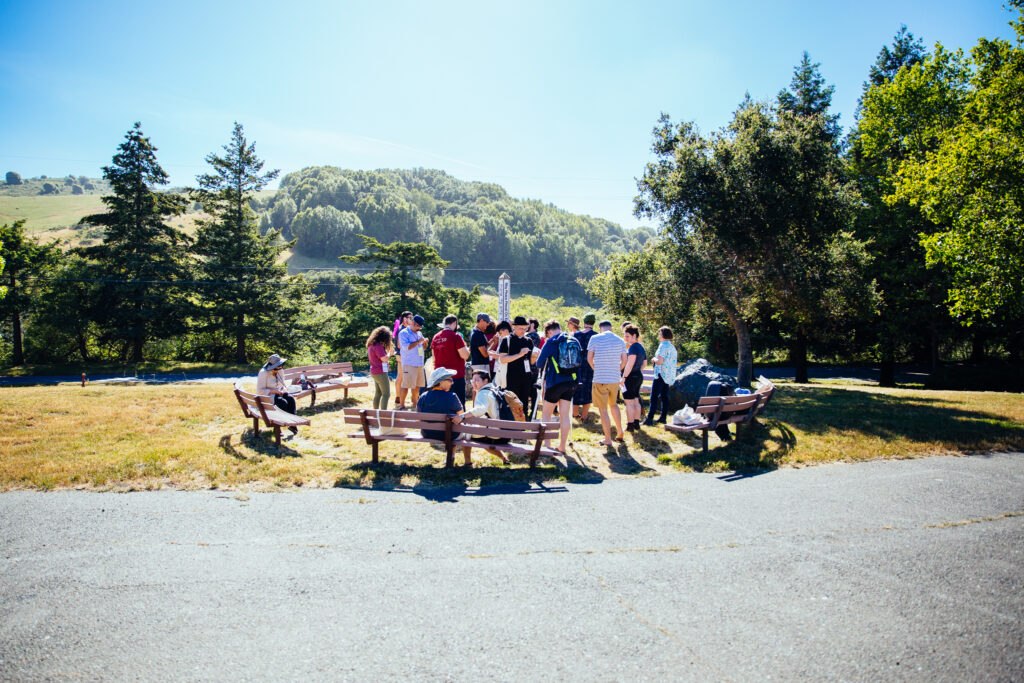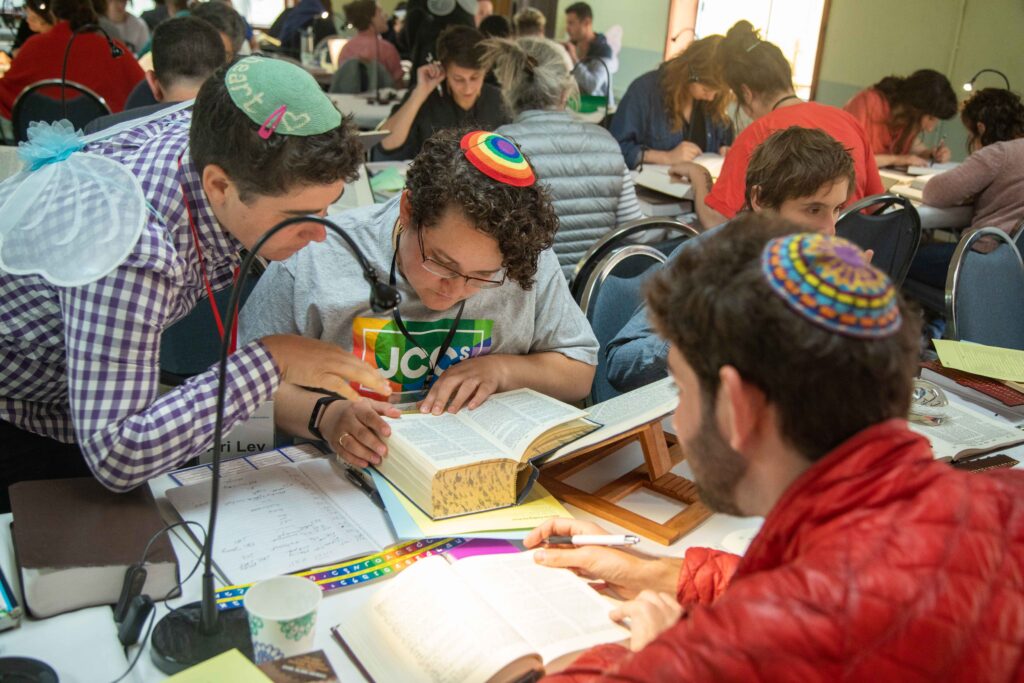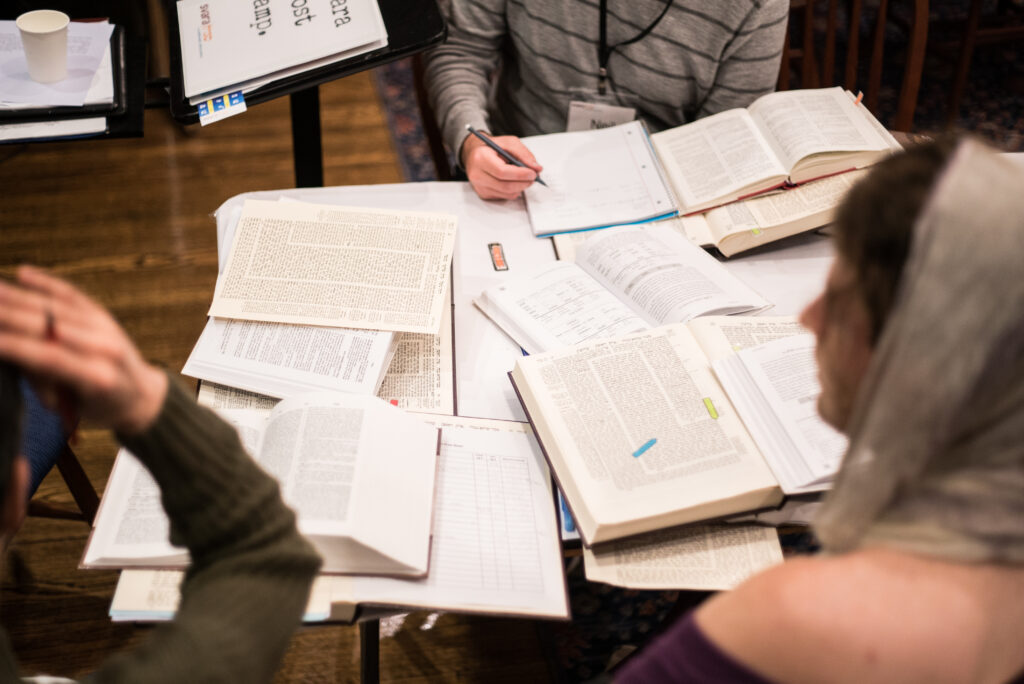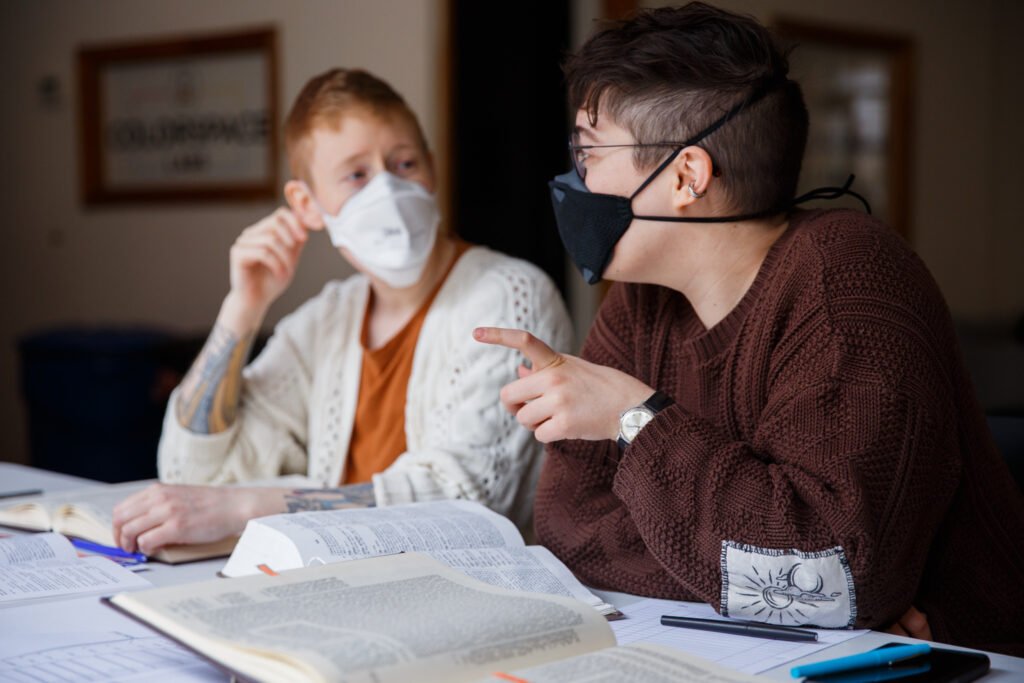In the first halakha class I ever took, we sat in a circle, opened up a book called the Mishnah Berurah1, and read through, line by line. The book was the brown-ish, burgundy-ish color with accompanying embossed gold Hebrew letters that signals “Hey, I’m an important Jewish book.” The page sort of looked like a daf, but with some different fonts and some characters on the page I hadn’t yet met. Each person in the circle read and translated, and each sentence was a prescriptive statement that built on the other. “Do this.” “Don’t do that.” “If you did that, it’s okay after the fact if you do this other thing.”
It looked like gemara, but it didn’t feel like gemara.
Where was the discourse?! Where was the challenge, the pushback, the creativity, the pious irreverence, the gay puns?!
Reading through this book together, sentence by sentence, rule by rule, I felt a lot of resistance. Who are these people just making up rules for me to follow? Where did they get that and where did that instruction come from?
This mode of writing is a specific genre in halakha that’s usually referred to as “codes,” semi-comprehensive books that distill halakhic discourse into practical instructions. If you’re hanging out with us this Elul, you’ve likely dipped your toes into the waters of halakhic codes, as we’re exploring one of the most influential codes: the Mishneh Torah, written by the Rambam in the 12th century.
Among those of us who are drawn to Talmud ‘s dynamism and multivocality, codes tend to get a bad reputation.2
But the more I’ve spent time with these guys—especially in conversation with each other—the more I’ve found the same dynamism that brings me to Talmud. It’s just … under the surface.
This is because in the complex mycelial network of halakha, codes are mushrooms.3
Merlin Sheldrake, a modern maven of mycelium, explains that mushrooms are “the fruiting bodies of fungi,” the visible component of the “branching, fusing networks of tubular cells known as mycelium.” Mushrooms facilitate dispersion of fungi, “a bit like how plants make seeds.” Not all fungi produce the ‘fruit’ of mushrooms; the majority of fungi, however, is mycelium, the vast and intricate network of “tubular cells.” Sheldrake writes, “Mycelium is ecological connective tissue, a living seam by which much of life is stitched into relation.”4
To me, it sounds a whole lot like halakha. And if all of halakha is a mycelial network, mushrooms are the fruits that emerge at the top. While they seem to appear out of nowhere, mushrooms emerge from networks that, if stretched, could in some cases stretch up 10km.5 So it is with every code: underneath every codified “rule” is a network of texts, ideas, and concepts that, if stretched, could fill hundreds of pages.
Our tradition expresses its appreciation for the unique power of mushrooms the way it often does: through a berakha. According to the Rabbis (Berakhot 40b), the blessing recited over foods that grow in the ground, בורא פרי האדמה, “[Blessed are You G!d,] Creator of the fruits of the ground, or “adamah” for short (shout-out to Mishnah Collective goers who have been deep in the world of food blessings!) is not to be said over mushrooms. Instead, they teach, one should say the catch-all blessing of שהכל נהיה בדברו, “[Blessed are You G!d] whose word creates everything,” or “she’hakol,“ when eating them.
It may at first seem like the Rabbis misunderstand the nature of mushrooms: If adamah is said over fruits of the earth—foods with root systems that grow them from and tether them to the ground—how could we possibly say shehakol over mushrooms, which we know have some of the most intricate root systems? Surely mushrooms are more like carrots than candy. Abaye clarifies the reasoning for this decision:
אָמַר אַבָּיֵי: מִירְבָּא רָבוּ מֵאַרְעָא, מֵינָק לָא יָנְקִי מֵאַרְעָא.
Abaye said: With regard to growth, they grow from the earth, but with regard to sustenance, they do not draw sustenance from the earth.
Later commentators and codifiers explain that it’s not that mushrooms never draw sustenance from the ground, but that they don’t exclusively grow from the ground; mushrooms impact and are impacted by the matter around them, growing in and of the world that exists. In fact, Sheldrake suggests that their scavenger-like nature makes mushrooms possibly more similar to animals than plants.
It is these features of mushrooms as the fruit of the fungal system that I’ve found analogous to codes. Seemingly emerging out of nowhere to the untrained eye, they facilitate our ability to communicate across texts and across communities. They are the surface-level flowering that emerges out of a complex web of texts, ideas, people, and places. And they absorb from the world around them, not only emerging from the root network but also absorbing, relating to, and offering needed elements to new surfaces.
Of course, some argue that the Rambam’s preference for comprehensive codification emerged from his desire to “liberate students of philosophy from the need to delve into legal minutia” (Ackerman, referencing Halbertal), which the Rambam saw as a “wast[e] of one’s time” (Igrot Ha’Rambam). For the Rambam, a simple and easy-to-use halakhic code enables us to bypass the challenge of learning Talmud—we do not need to do the work because he has done it for us. As a result, we’re able instead to dedicate our time to more worthwhile pursuits, like philosophy.
But for me, it’s the opposite. (Sorry, Rambam!) Codification is the fruit of intertextuality; it is what emerges on the surface when we allow the network of texts to communicate and help us arrive at a practice, behavior, or clarification that our system needs.
Tending to our gemirna—our collective and individual sense of knowing and learning on our journey to becoming players—means that we improve our ability to hear these intertextual communications, that we develop ourselves into foragers who see not only the fungal fruit of practical halakha but that we pay attention to the networks of interconnectedness out of which these teachings emerge.
As we chevruta-ed on our text for Rambam’s Repair Manual ahead of the zman, Bronwen and I felt this so deeply. Our halakha (Mishneh Torah, Hilkhot Teshuva 2:9) opens with a phrase אֵין הַתְּשׁוּבָה וְלֹא יוֹם הַכִּפּוּרִים מְכַפְּרִין אֶלָּא עַל עֲבֵרוֹת שֶׁבֵּין אָדָם לַמָּקוֹם (teshuva and Yom Kippur do not bring atonement for transgressions except for those between people). Bronwen and I immediately buzzed: oh we know where Rambam gets this. We’ve learned this before: Mishnah Yoma 8:8-8:9. And as we kept learning this text, Bronwen pointed out the subtle hyperlinks to other beloved sugyot: החובל (“the one who harms”), מקניט בדברים (“one who curses with words”) – familiar phrases that signal connections to texts that we’ve learned slowly and carefully with y’all, over and over. Suddenly the words on the page felt like they pointed to something deeper.
When we learn halakha through codes, we can hold a loving curiosity about these tendrils, finding where they connect to other fruits, the surrounding trees, rooting the entire forest together. Codes—when they visibilize their work—help me see the network underneath my practice; they help us tap into the depth of our tradition, the cross-generational conversation, and the multiplicity of texts, of perspectives, and of Torah that are held within each behavior we enact as a community.
And so, as we find ourselves in Elul, a season of transformation and presence, I hope to rededicate myself to paying attention in the bet midrash—and beyond—not only to the fruits of codification, but also to the power of these textual fungi to point us to what’s underneath.
____
1 The Mishnah Berurah is a halakhic book authored by R’ Yisrael Meir Kagan in the 19th century. It is a commentary to the first section of the Shulchan Arukh, a foundational code by R’ Yosef Caro that was written in the 16th century. As it turns out, I later learned we were actually studying the Shulchan Arukh. Who knew?!
2 See “The In-Authenticity of Codifying Jewish Law” by R’ Nathan Lopes Cardozo
3 I’m neither a mycologist nor a plant expert. I learned some things about mushrooms from a neat book, a Netflix movie, and a few articles. Please help me develop my ‘svara’ here by sharing any ways that this analogy does and doesn’t work for you!
4 Merlin Sheldrake, “Why the hidden world of fungi is essential to life on Earth,” The Guardian (10/10/2020)
5 According to Merlin Sheldrake above!







